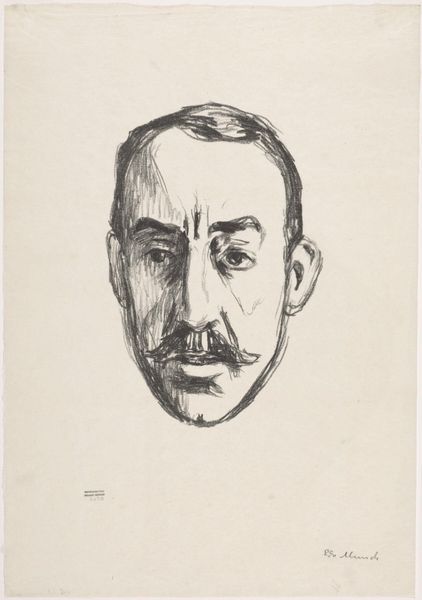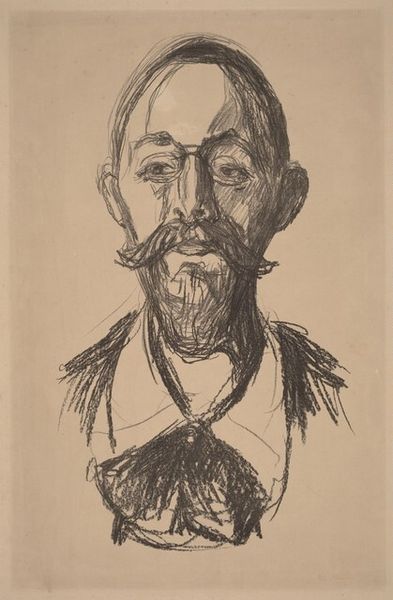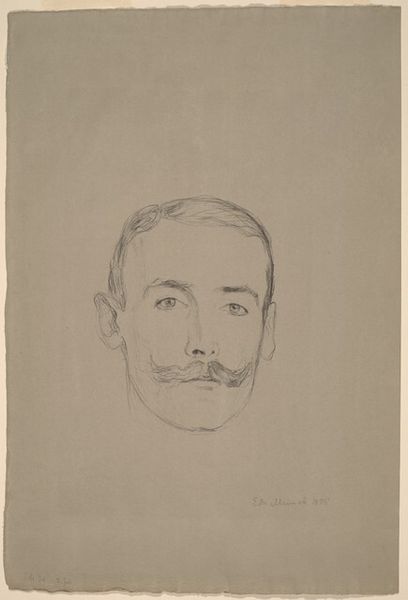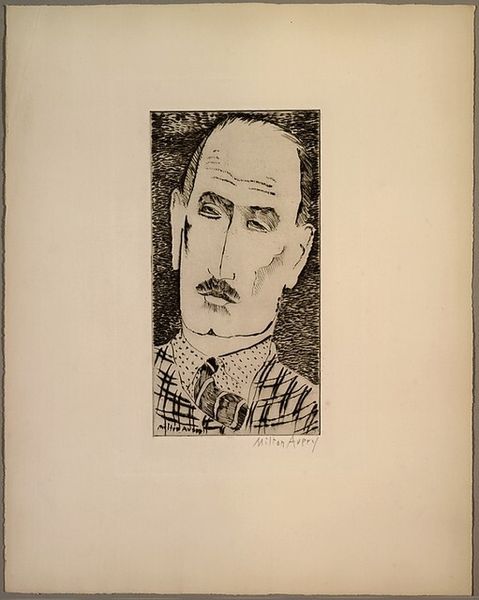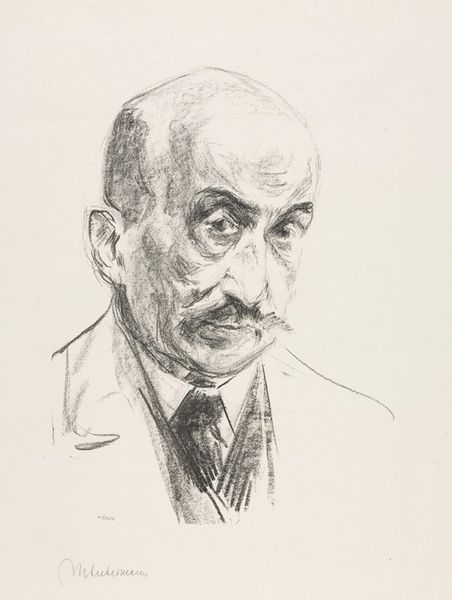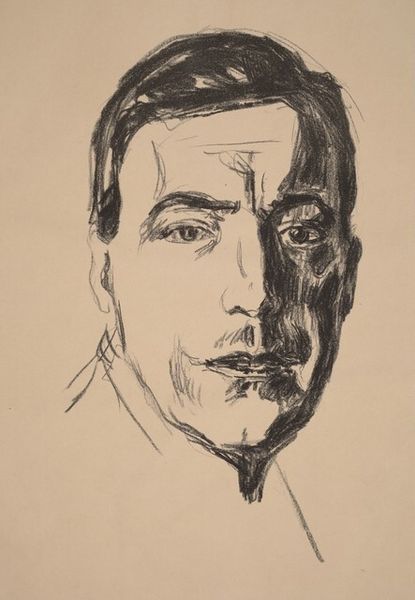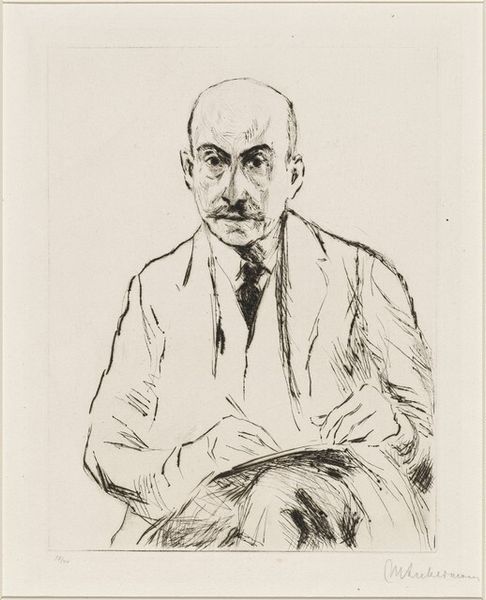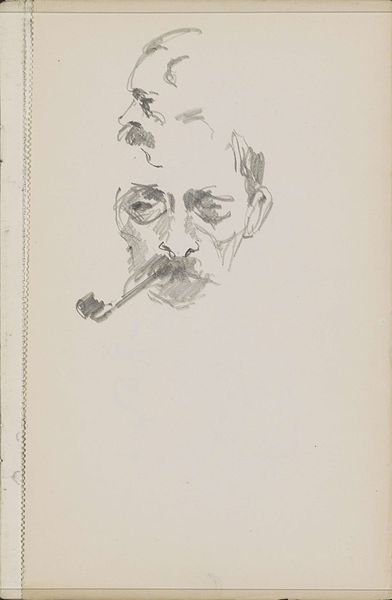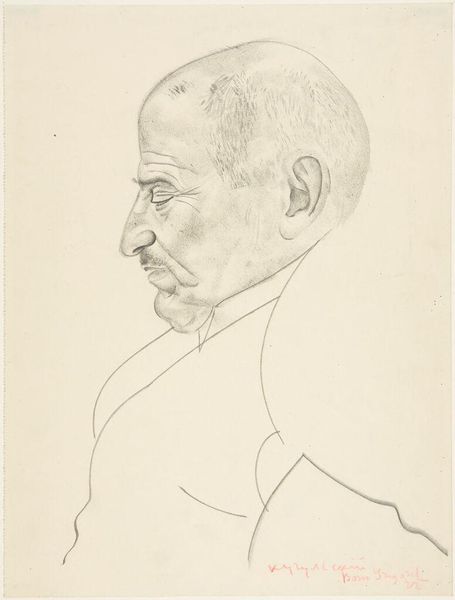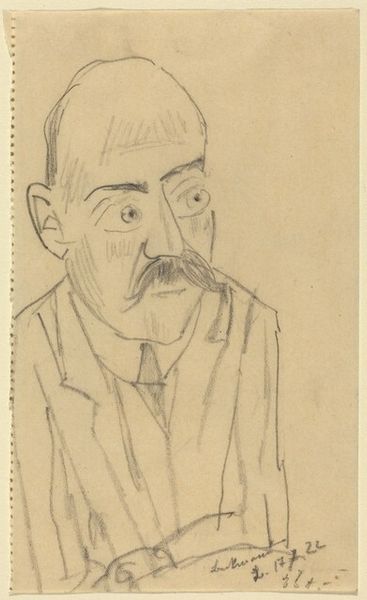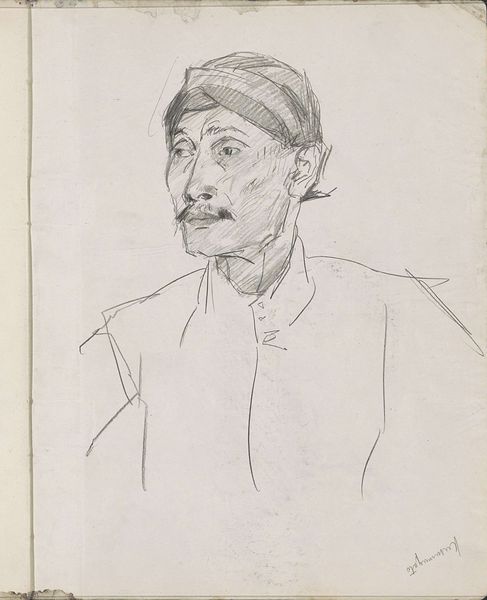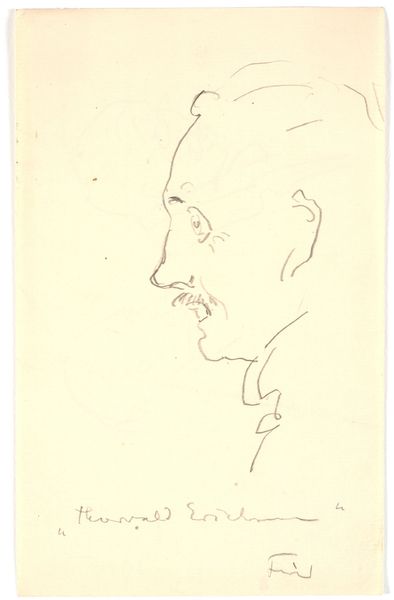
drawing, pencil, graphite
#
portrait
#
drawing
#
pencil sketch
#
pencil drawing
#
pencil
#
expressionism
#
graphite
#
portrait drawing
Copyright: Public Domain: Artvee
Curator: Here we have Edvard Munch's 1906 pencil drawing, titled "Henry van de Velde." Editor: My immediate impression is one of intensity, even unease. The sharp lines and stark contrasts create a palpable sense of nervous energy. The drawing almost feels unfinished, raw. Curator: Indeed, the raw quality contributes significantly to the expressionistic impact. Munch’s portraits are often less about likeness and more about conveying inner emotional states. Consider van de Velde’s role within the cultural discourse of the early 20th century. As a designer and architect, he challenged traditional aesthetics and sought to revolutionize the relationship between art and everyday life. One might argue that Munch recognized in van de Velde a kindred spirit—an artist similarly committed to challenging conventions. Editor: Yes, the sketch’s lack of precise contours seems almost deliberate. Munch uses lines to delineate form but also to disrupt it, especially around the eyes and forehead. Semiotically speaking, that disruption could signify internal struggle or psychological tension. The rapid, almost frantic, application of graphite also creates an interesting tension within the composition itself, suggesting both form and its dissolution. Curator: And what about the mustache? Consider the cultural and societal implications of the mustache, here, during the Edwardian era. Does it express confidence or conformity? Does it invite parody? What do you make of this semiotic register as a kind of code? Editor: Well, given the limited tonal range, one can’t help but focus on the intricate web of lines that constitutes the face. Look how much information is conveyed with such economy of means. He’s really built the portrait around that central, anchoring feature of the face. Curator: His face, now suspended within our collective memory. We, the beneficiaries of that brief exchange of muses, are here to testify. Editor: A testament indeed to the power of suggestive strokes.
Comments
No comments
Be the first to comment and join the conversation on the ultimate creative platform.
